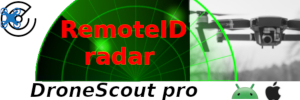Maybe we are splitting hairs, here, but the ANO is quite precise about the requirement: "... sufficient to monitor its flight path in relation to other aircraft, persons, vehicles, vessels and structures for the purpose of avoiding collisions." I am certain that I complied with that in the 900m+ line-of-sight case I described (and that was in Spain, in any case). I also agree that 500m is a good rule-of-thumb for more difficult visibility/conditions, and of course it might be much, much, less if it's misty, or flying near [towards] the sun, etc.
[The strobe issue is perhaps a different discussion .. if you have just the one strobe, typically affixed to the rear of the craft so as to not affect the camera, then that tells you the position, attitude and heading of the craft better than just seeing the black dot of the craft without the strobe.]
As for convincing the CAA/Police/Magistrates, etc., given there have been airprox reports of pilots spotting drones at more than 1km distance on their approach to airports, is that not sufficient evidence that 500m is not a top limit?

In short, why are you saying that 500m is a maximum when there is plenty of evidence that some people can see their drones at a distance greater than that? I know I have been able to; have you actually tried it?











